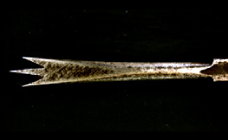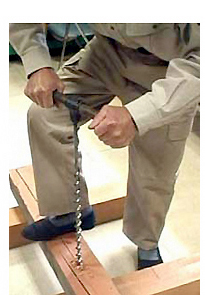Drills [kiri]
Kiri
Kiri

The kneading cone is a tool for opening holes while rotating round trip motion, but on the other hand, the tools for opening holes by giving continuous rotation are Boult Drills and Kuriko Drills. These Drillss were one of the tools that came in with Western mechanical technology from the end of the Edo period to the Meiji period. Boult Drills is Screw in English A tool called Auger has a cutting edge at the tip, and the shaft can be easily discharged by spiraling the shaft. The bolts and nuts that pass through this hole are also spiral-shaped screws. Looking back on the occurrence of screws, it is thought that in the West it was invented by the Pythagoras philosopher and mathematician Alquitas of Taras (around 400 BC). Specifically, a cylinder-shaped screw is drawn on a compressor in a fresco painting at the site of Pompeii.

In Japan, spiral-shaped Drills is seen in ancient times, but it seems that it has not been applied to the idea of screws. Boult Drills rotates the handle attached to the T shape. Kuriko Drills is the Drills that makes this rotation smoother. It seemed to have entered at the end of the Tokugawa period, and in the Meiji era it was also called Drills (brace) and Drills (bit) with the cutting edge. The advantage of the crank shape to give continuous rotation is the wisdom of the West. The invention of Crico Drills is reported to have been made in Europe in the 15th century. The Japanese, which is called screws and the crank shape, seem to have not been sensitive to rotational motion. But what was the surprise of the Japanese at the time when they saw these things? I think I was greatly inspired by ingenuity.
In Japan, we have traditionally kneaded Drills when drilling nail holes, but in the Meiji era, when a bonding method using bolts was introduced along with Western-style architecture, a screw-shaped Bolt Drills came to be used, allowing thick and deep holes.
Basic information
Special Exhibition
Permanent exhibition